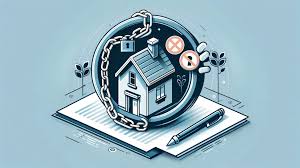
Table of Contents
When dealing with real estate transactions, the term “encumbrance” often surfaces, and understanding its meaning is crucial for both buyers and sellers. Encumbrances can significantly impact property rights and value, making it essential to identify them early in any real estate deal. In this article, we delve into the meaning of encumbrances in real estate, their types, and how to identify them effectively.
What Are Encumbrances in Real Estate?
An encumbrance is any legal restriction, claim, or liability attached to a property that may affect its transferability or use. These can hinder or burden the property owner’s rights, potentially reducing its market value or desirability. Encumbrances do not necessarily mean ownership but indicate a limitation on the property’s free use or disposition.
Types of Encumbrances in Real Estate
Liens
Liens are financial claims against a property, often due to unpaid debts. They give creditors the right to seize the property if obligations are not met. Common examples include:
- Mortgage Liens: Created when a property owner takes a loan and offers the property as collateral.
- Tax Liens: Imposed by the government due to unpaid property taxes.
- Mechanic’s Liens: Filed by contractors or suppliers who haven’t received payment for services rendered.
Easements
Easements grant specific rights to a third party to use a portion of the property for a particular purpose. For instance:
- Utility Easements: Allow utility companies to install and maintain infrastructure like power lines.
- Access Easements: Provide neighboring properties the right to cross the land for access.
Restrictive Covenants
These are rules set by a homeowners’ association (HOA) or developer to maintain neighborhood uniformity or standards. Examples include restrictions on:
- Property modifications.
- Types of permissible activities, such as running a business from the home.
Encroachments
Encroachments occur when a structure or object extends onto another’s property without permission. This might involve fences, buildings, or landscaping. Encroachments can lead to disputes and require resolution before a sale.
Leases
Leases are agreements granting tenants the right to use a property for a specified period. These agreements must be honored by new property owners unless otherwise stated.
Zoning Restrictions
Zoning laws dictate how properties can be used, such as residential, commercial, or industrial purposes. They can also limit the types of buildings allowed or specific activities on the property.
Why Identifying Encumbrances Is Important
Identifying encumbrances is a critical step in any real estate transaction because:
- Ensures Clear Title: Buyers need to confirm that the property is free from issues that could impact ownership.
- Avoids Legal Disputes: Resolving encumbrances early prevents potential legal challenges.
- Preserves Property Value: Certain encumbrances may decrease the property’s market value or make it harder to sell in the future.
How to Identify Encumbrances
Conduct a Title Search
A title search is an essential step to uncover any recorded encumbrances. This process involves reviewing public records for liens, easements, or other claims. Title companies typically handle this for buyers, providing a title report summarizing their findings.
Review the Property Deed
The deed often includes references to encumbrances such as easements or restrictive covenants. Ensure you obtain and examine this document carefully.
Hire a Professional Surveyor
A professional property survey can reveal physical encroachments, such as structures crossing boundary lines. Surveys are invaluable for identifying issues that may not appear in public records.
Check with Local Authorities
Municipal offices can provide details on zoning regulations, building codes, and permits that may affect the property. They can also clarify any pending issues or restrictions.
Engage a Real Estate Attorney
A real estate attorney can help interpret complex encumbrances and provide guidance on resolving them. Their expertise is particularly useful in cases of liens or restrictive covenants.
Speak to the Seller and Neighbors
The current owner and nearby property owners can often provide insights into unrecorded encumbrances, such as informal easements or disputes.
How to Resolve Encumbrances
Resolving encumbrances can vary depending on the type and severity. Here are some common solutions:
- Paying Off Liens: Satisfying outstanding debts clears financial claims on the property.
- Negotiating with Parties: Address encroachments or disputes through mutual agreement.
- Legal Action: In cases of contested claims, seeking legal resolution may be necessary.
- Amending Restrictive Covenants: Work with the HOA or relevant authority to adjust restrictive rules if feasible.
Conclusion
Encumbrances are an integral aspect of real estate that can significantly impact property transactions. Identifying and understanding these issues is crucial for safeguarding investments and ensuring smooth transactions. Whether you’re a buyer or seller, taking proactive steps to uncover and address encumbrances will help you navigate the complexities of real estate with confidence.
